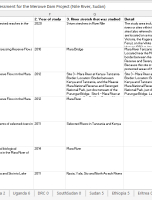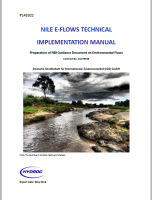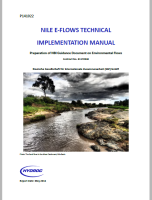Abstract
Environmental flows (eflows) describe the quantity, timing, and quality of freshwater flows and levels necessary to sustain aquatic ecosystems which, in turn, support human cultures, economies, livelihoods, and well-being (Sensu Arthington et al., 2018). Over the last years, the Nile Basin Initiative (NBI) has developed its Strategy for Management of Environmental Flows in the Nile Basin, during which an environmental flow assessment methodology (EFM) has been developed. Considering the many development activities in the Nile basin, eflow requirements urgently need to be established in order to ensure sustainable development and holistic planning of the use of water
resources. In 2016 the NBI developed an eflow framework to support and coordinate eflow determination processes and management in the basin. This phased framework is not an EFM but a framework to guide the management of eflows including the selection of and use of EFMs and then alignment of eflows and their implementation. The assessment described in this report is based on the NBI eflow strategy and provides a first implementation step for Nile basin wide consideration of eflows. The report presents the outcomes of a coarse, rapid, and holistic assessment of the consequences of altered flows and other important non-flow environmental drivers of change in the Nile basin, to a range of socio-ecological endpoints. The study area includes nine reaches of rivers or sites within the Nile basin. These sites (also referred to as Risk Regions) are located on a major tributary of Lake Victoria, the Kagera River (RR1 at Kyaka Ferry), on the White Nile below Lake Victoria (RR2 at Jinja), on the White Nile upstream of the Sudd (RR3 at Mongala), on the Baro River (RR4 at Gambela), on the Sobat River (RR5 at Hillet Doleib), the White Nile downstream of the Sudd (RR6 at Malakal), on the Blue Nile (RR7 at Roseires), on the Atbara River (RR8 at Kubor and Wad Elhiliew) and on the lower Main Nile (RR9 at Dongola).



